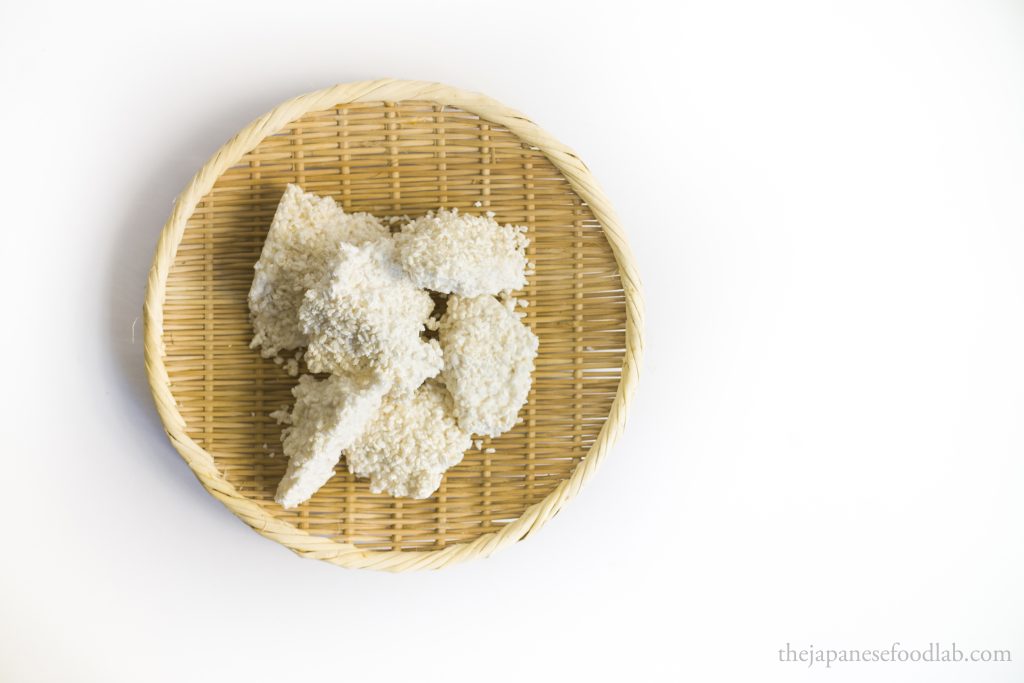
Why is koji added to miso?
To find more information on growing koji and the science behind it, click here.
The word koji (Kouji/麹) in Japanese is a general term of a grain that has been inoculated with a species of fungus known as Aspergillus oryzae. To understand the utility of koji, let’s first take a closer look at the human stomach as a close analogy. Our diet mainly consists of proteins, starch and fats that are made of long chains of amino acids, sugars and lipids respectively. These long chains cannot be readily absorbed by our bodies until they are broken down and digested in the stomach into smaller segments. Other than gastric acid, our stomach breaks down food we eat using enzymes. For example, proteases are enzymes that specialise in breaking down protein, such as the meat and fish we eat, while amylase is an enzyme that specialises in breaking down starches, such as pasta or rice. These enzymes are produced in the stomach internally and help us to break down starches, proteins and fats.
If you consider all larger living things such as animals, fish, birds and reptiles, they all digest food in the same way, consuming the food internally and then producing enzymes in their stomach to digest the food. In the world of fungi however, the process of things are done differently, as they don’t have an internal digestive system and instead carry out external digestion. Similar to us, fungi produce enzymes, but instead of using them internally, they secrete them into the environment around them. These enzymes break down the food surrounding the fungus, allowing it to be absorbed into the fungus. When you see fuzzy mould growing on your bread, that is exactly what is happening. Instead of eating the bread, the mould is secreting enzymes onto the bread, externally digesting it before absorbing the nutrients into the mould.
As a type of mould, Aspergillus oryzae basically carries out the same process of external digestion. When Aspergillus oryzae is grown on rice or barley to make koji, it produces two main enzymes, protease and amylase which break down protein and starch respectively. The breakdown of protein and starch actually alters its taste, usually in a way which we find surprising and delicious. For example, cooked rice tastes plain, whilst cooked rice that has been cultivated with Aspergillus tastes sweet as the starch in the rice has been broken down by the amylase produced by the aspergillus into sugar.
This is where the magic of miso begins. Koji grown on rice alone will not develop any complex flavours as the enzymes produced have only the starch in rice to break down into sugar. Unlike rice however, soybeans contain a mixture of different proteins and starch. In order to break down these proteins and starches, we can mix the koji into the soybeans, allowing the enzymes produced by the koji to work on the soybeans, producing the flavours we recognise as miso.
This is why miso can actually be considered a two step fermentation. The first step being the production of enzymes through the growing of aspergillus on rice or barley, before then using those enzymes to transform the proteins in soybeans in a paste of umami, complimented by the slight sweetness of the koji and balanced out by salt.
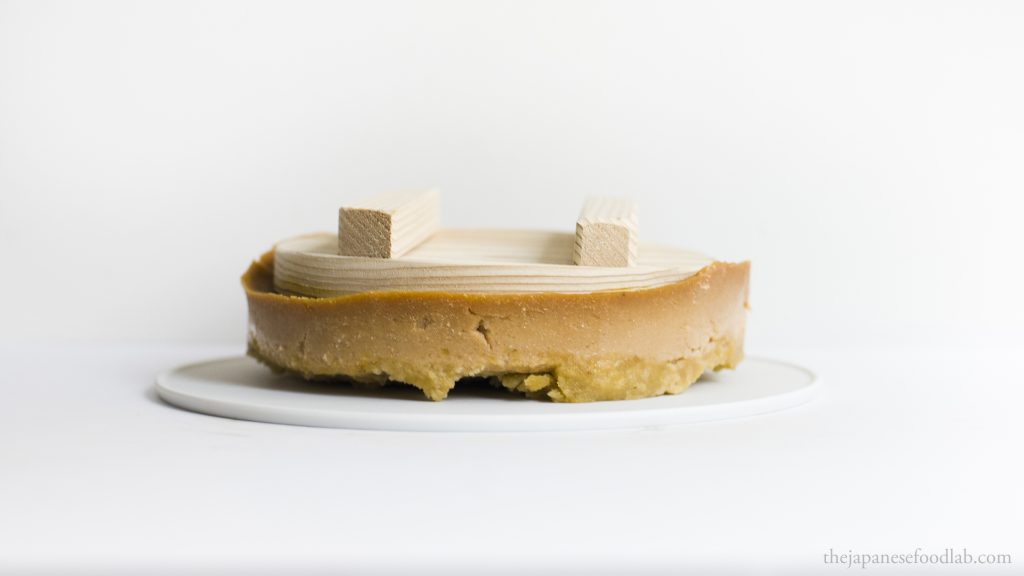
What happens when miso ferments over time?
When the enzymes produced by the koji start breaking down the long chains of proteins in the soybeans, the resulting shorter chains of proteins are not uniform but instead made from a variety of different lengths and amino acids. This is what causes the miso to develop its characteristic savoury and umami notes. Whilst this process does speed up at a higher temperature, it tends to be a slow and gradual process, slowing down during the cold winter months before ramping up during the summer months. Some people believe that the rhythmic nature of the fermentation is an important contributor to each one’s unique flavour as they ferment over the seasons.
Whilst the above process occurs slowly in the background, a much faster one takes hold right from the start. Alongside Aspergillus oryzae, a whole host of beneficial bacteria such as yeast, lactic acid and acetic acid bacteria begin to colonise the miso. This community of microorganisms generate a lighter more complex taste in the miso early on in its fermentation, before giving way to the more savoury notes from the work of the enzymes. Most traditional Japanese misos tend to go for the later taste (with the exception of sweet misos), whilst most modern restaurants tend to go for the former by emphasising the complexity generated by the microbial community.
What’s the ideal moisture level to ferment miso? (How much water do you add to miso?)
Whilst moisture content in miso is usually ignored or glanced over in lieu of other factors such as salt content, temperature and humidity, to us, the moisture content of your miso is the most important factor that you’ll need to learn the ins and outs of. Let’s use the largest metropolitan area of the world as an analogy- Tokyo. In order for any sort of basic human activity to occur, transport in some form happens. Whether this is simply walking to your nearest ramen joint, taking the subway to work or delivering ingredients to a restaurant across the city in a van from the market. Transport in all forms is key to the interconnectivity of the city. Now imagine that your container of miso is a city itself and for such a city to function, there needs to be some system of connectivity or transport. On a microscopic level however, things work differently, and bacteria, yeast and enzymes can’t simply move through to miso.* Instead, water is the crucial medium which facilitates everything that occurs in this city. Proteins, starches, enzymes and bacteria are all mixed and floating around in the available water, interacting with each other as they randomly bump into each other.
If you add too little water to your miso and its moisture content is too low, there won’t be any bacteria, fungal, enzymatic or chemical activity occurring as none of the players involved will be able to interact with each other. Without water, enzymes, which are just proteins and not sentient living things, won’t be able to randomly bump into and break down the starch molecules. This is why dried grains or dried fruit don’t ferment and take a long time to go bad or mouldy, as there isn’t enough water around. Whilst this is at the extreme end of things, a dry miso also runs the risk of uneven fermentation as parts of your container that by chance contain more koji ferment faster than other parts.
The opposite is also true, if your miso is too wet, there will be too much fluidity and activity which will lead to fermentation occurring very quickly. High moisture environments are also ideal for bacteria growth and your populations of lactic acid and acetic acid bacteria will run rampant, causing your miso to taste off balance and slightly acidic. If you’re strictly trying to make miso for consumption, this not ideally what you’d want, but it’s worth noting that there are traditional recipes that exist for extremely wet misos that are designed for harvesting tamari, which is the dark soy sauce like liquid that pools on top of the miso during the fermentation period.
It is very important that you learn through trial and error how differences in miso moisture content affects the final product you create and hopefully you’ll develop a sense of the right moisture level for your miso based on its texture. As a rule of thumb, your miso shouldn’t flow when handled as it’ll be too wet, but shouldn’t be so dry that it crumbles. It’s probably a good idea to buy a miso off the shelf and handle it with your hands to get to know what textures and feels to aim for in your final product. Even though our recipes provide instructions for the amount of water to add, it doesn’t take into account the different rates of evaporation which may be different from where you live.
Whilst some may argue that bacteria are able to ‘swim’ through water through various forms of locomotion, the speed and ease that this occurs is still largely dependent on the total amount of moisture.
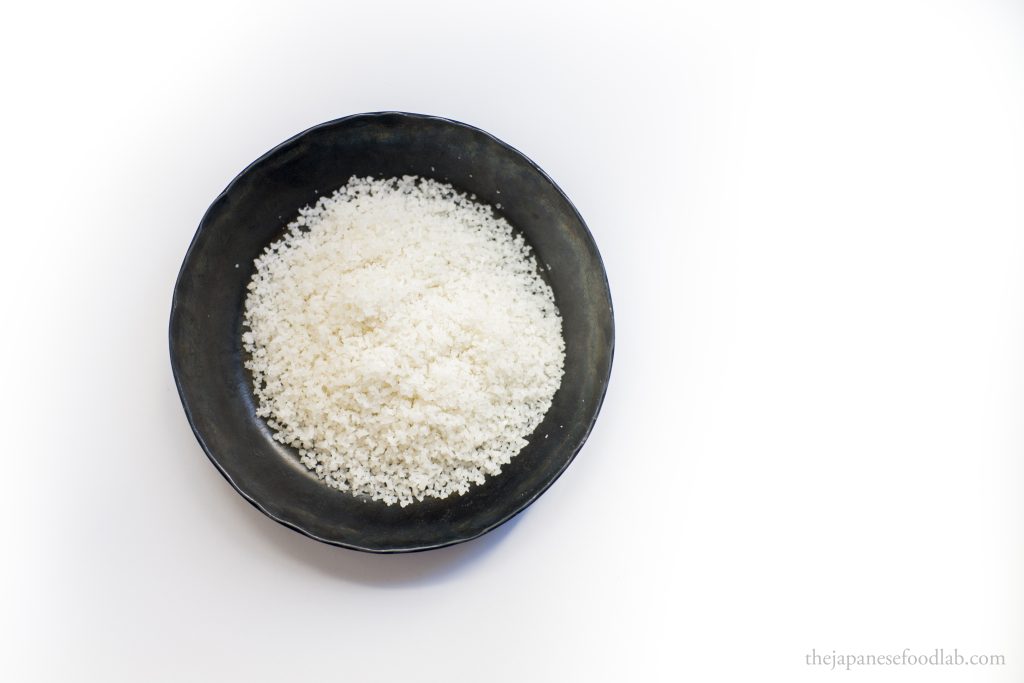
How much salt do I add to my miso?
Salt is added to miso not only as a flavour enhancer, but as a preservative, allowing the enzymes to continue working away without the mixture going bad, thus allowing the taste of the miso to develop over time. If we were to look at traditional Japanese misos, you’d notice that all non-sweet misos have a very high salt content. Barley miso for example, is made from anywhere between 8% and 14% salt. At 14% salt, it tastes at its prime after 3 whole years of fermentation. This is because such high salinity inhibits the growth of microorganisms, both good and bad. As such, while you won’t get any complexity in taste from yeast or lactic acid bacteria, it’s safe to allow the miso to ferment for a long period of time to develop earthy and savoury notes through the slow work of the enzymes produced by the koji, as there’s no risk of mould growing.
In contrast modern miso makers have moved towards a lower salt content in their miso. As mentioned above, they aim to emphasise the lighter and more complex taste generated by the community of beneficial microorganisms that establish themselves early on in its fermentation. Taking the Noma guide to fermentation as an example, they’ve opted for 4% salt as the ideal weight for the miso they make. Such a low salinity provides a good environment for microorganisms to thrive, and the miso quickly develops its taste. These misos are designed to reach their peak flavour profile after a short 3 to 5 months of ageing. However, with such a low salt content comes the risk of spoilage and mould growth and left to age for longer, the miso may start to taste unbalanced or risk going bad from the growth of unwanted microorganisms.
For accuracy’s sake however, the initial recipes given here will have a high salt content to achieve the taste profile of miso made in Japan. If you wish to make miso with lower salt, I highly recommend trying to make sweet white miso or sweet red miso, which are the only two traditional varieties that emphasise sweetness instead of savoriness and are thus low in salt. If you do want to experiment with your own recipes however, Noma’s basic rule of thumb of not going below 4% of the miso’s total weight in salt is ideal. If you’re aiming for misos with deep earthy savouriness, then you’ll want a high salt content and long ageing times (see individual recipes for specifics).
What’s the ideal temperature to ferment miso?
As with all rates of chemical reactions, the higher the temperature, the faster your miso will ferment. As you increase the temperature, the enzymes made by your koji will break down the starches and proteins faster. However, there’s a good reason to ferment your miso at a moderate temperature. Whilst the enzymes will continue to work faster and faster up until around 60°C/140°F, it makes it harder to control and fine tune your miso’s fermentation when it’s going so quickly. Exposure to such high temperatures for long periods of time will also slowly cook or dehydrate your miso, meaning that your miso will end up either tasting bitter and overly caramelised (read burnt) or dry and crumbly due to the loss of moisture. Above 60°C/140°F, the enzymes, which are made from proteins themselves, start to stop working as they denature and become permanently damaged. At lower temperatures the rate of fermentation also slows to a crawl and while technically there aren’t huge downsides to a slower fermentation, there really isn’t a reason to do so. Instead, we recommend letting your miso ferment anywhere between 28°C/82°F to 32°C/90°F as a maximum temperature if possible as this is similar to the maximum indoor temperature you’d experience in Japan.
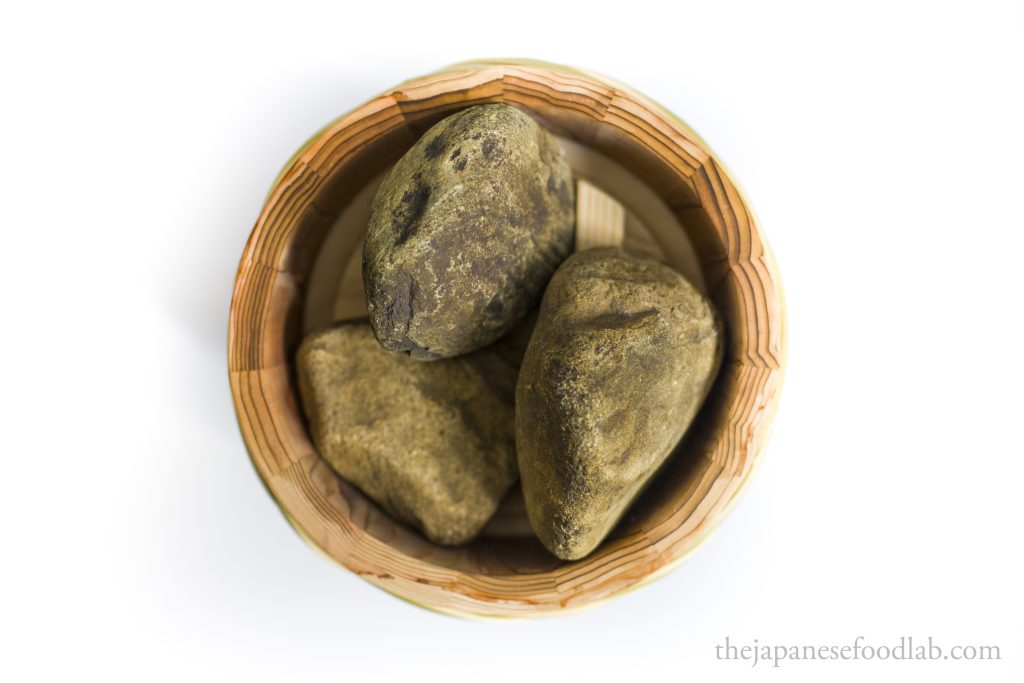
Do you need a temperature controlled environment to ferment miso?
Whilst having a temperature controlled chamber is helpful, there’s nothing wrong with letting your miso ferment naturally at room temperature if you live in a country with similar weather to Japan or in a country that experiences the 4 seasons (for other countries, see the humidity section for more information). Whilst most western restaurants will ferment their miso in temperature controlled chambers, this is so that they can produce a consistent product to serve their customers, whilst also speeding up the production time. It’s unthinkable to serve miso that tastes different from month to month to your customers, let alone run out of miso. Producing miso at a constant temperature allows them to reliably plan ahead for the amount of miso they’d need to manufacture, as well as reliably predict the timescale at which their miso will ripen.
In a home environment part of the appeal is to see how changes in temperature and fermentation time ultimately affect the taste of the miso you make. We also recommend it as it’s a way for you to gain a deeper understanding of how miso ferments in the environment you live in. Generations of people have made miso at home without a controlled temperature environment and all that’s needed is a bit more care and attention. Even in miso factories in Japan, some factories see the importance of incorporating temperature changes whilst their miso ferments. Whilst they also use temperature controlled chambers and tanks, some of them actually program in condensed shortened versions of the four seasons, where there will be periods and cycles of hot and cold through the miso’s fermentation (between 15.5°C/60°F to 32°C/90°F).
What’s the ideal humidity to ferment miso?
The ideal ambient humidity to ferment miso is 65-75% if you’re using an environment controlled fermentation chamber. If you’re lucky enough to live in a place with similar weather and humidity as Japan, lucky you, as there’s nothing to worry about in terms of humidity. If not, there’s still an important takeaway from the climate of Japan, which is that it’s still possible to make delicious miso without a fermentation chamber even when there’s large fluctuations of humidity through the year. In Japan, the humidity is high during the rainy season of spring and during the hot summers (~75%), before dropping during autumn and winter (~50%). However, it’s still possible to make delicious miso in containers left out in the open with this level of fluctuating ambient humidity as people have been doing for years and years.
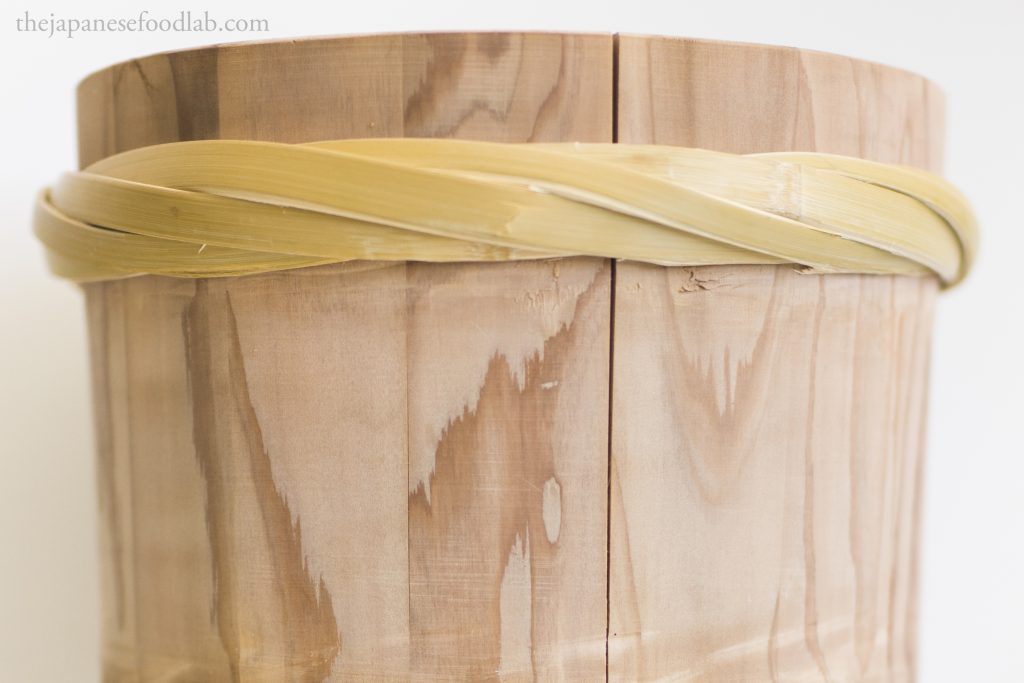
How can you make miso in an environment with low humidity?
If you live in a country with a very low average yearly humidity, you’ll still be able to ferment miso at home as long as you keep in mind your miso’s moisture content and learn to manage it. Evaporation occurs much faster in conditions with low humidity. If too much evaporation occurs, your resulting miso will be dry and crumbly. Not only that, but some amount of moisture is required for enzymes to do their work, so if your miso is too dry, fermentation will grind to a halt (refer to above section on moisture content). As water evaporates from your miso, the salinity of your miso will increase as the proportion of salt to total miso weight will increase. Sooner or later, you’ll just end up with dried preserved salted bean paste that never fermented into a miso.
Instead, the trick to making miso in a low humidity environment is to add an inner lid to your miso container. By lid, we don’t mean the lid that seals your container on top, but one that sits directly on top of your miso. This reduces the amount of evaporation that occurs to your miso whilst also still allowing the miso to breath (refer to below: can miso be made in airtight conditions). Traditional lids that have been applied directly on top of miso include a layer of sake lees, kombu, magnolia leaves, older miso from another batch and even paper. My personal recommendation is sake lees if you can find it, as I like the slight aroma of sake it adds to the miso as well as the little alcohol that remains in the sake lees which prevents mould growth.
It’s also worth noting that because of evaporation, your miso will have a higher salt content than you initially calculated as the overall weight of the miso will have decreased. Whilst this is not a huge problem, you can expect your miso to be slightly saltier than if fermented in a higher humidity environment. If a lot of evaporation is occurring. It might also be worth stirring your miso once every few months to make sure fermentation is occurring evenly.
Unfortunately, any tamari that is produced by your miso will most likely evaporate away before you can harvest it. Container-wise, I recommend against using wooden containers when making miso in a low humidity environment, especially not the traditional miso barrels, as I find that wood can sometimes shrink too much due to the lack of moisture which will cause the miso to leak out at the bottom or sides and act as a pathway for mould to penetrate into the miso.
How can you make miso in an environment with high humidity?
If your environment has a very high humidity, your main concern is mould growth and your miso going bad. This is especially risky if you are making sweet miso with very low salt content. You’re not going to have to worry about your miso drying out, so whilst a lid that sits on the miso isn’t necessary, you should instead have an outer lid over the top of your container to prevent insects, dust or other bits and pieces from getting in. Two layers of muslin or cheesecloth works well if you are using a glass or plastic fermentation container as you’d want the miso to still be able to breathe.
If you’re using a wooden miso barrel instead, you’d want to salt the bottom of the barrel before adding miso into it as well as gently applying salt to the inner walls of the barrel. Once the miso is packed into the barrel, you can then sprinkle a light layer of salt on the top of the miso. This acts as extra protection against any drop in salinity from any additional moisture.
Unfortunately, some of the most humid places in the world are tropical countries, which tend to have constantly high temperatures all year round, higher than what you’d find during a Japanese summer. Because of this, you’re going to need to be extra vigilant around mould growth. You’d also want to make sure you keep your miso container a well ventilated cool shady spot indoors. A lack of ventilation is perfect for mould growth but direct exposure to the harsh weather outdoors of rain and sun is also not suitable. Any extra water, be it rain or condensation, that enters your miso container will immediately lower the salinity and promote the growth of unwanted bacteria.
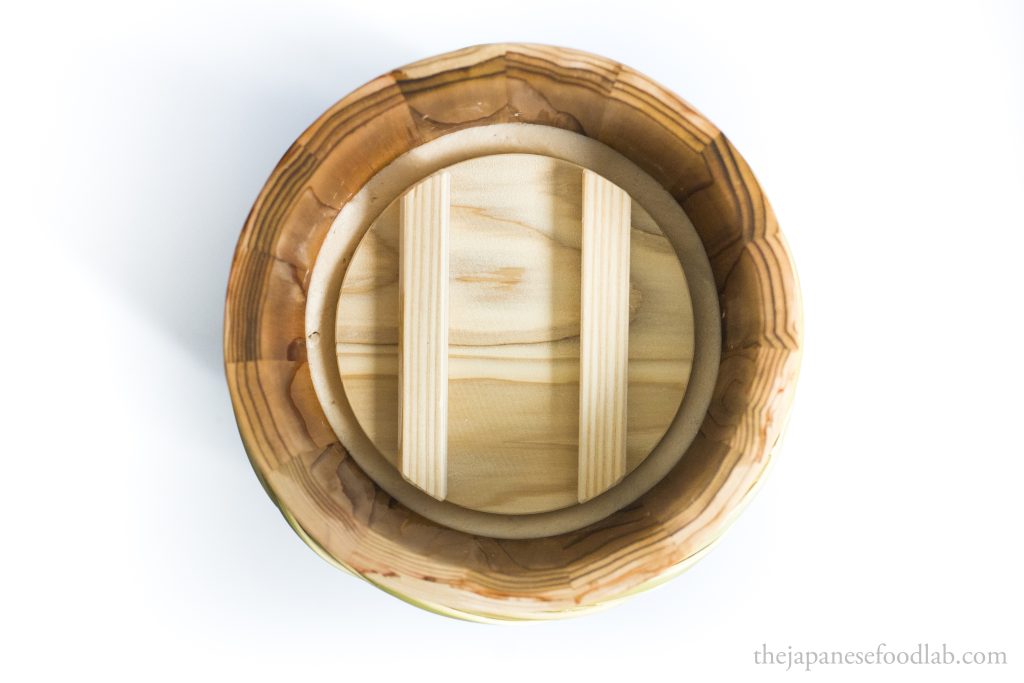
Can miso be fermented in airtight conditions?
Short answer, no. One would easily be mistaken in thinking that miso can be made in an airtight container, and whilst you will obtain something that resembles miso paste, your miso paste will taste slightly off. Enzymes are simply proteins that speed up chemical reactions and thus do not need oxygen. Meanwhile, lactic acid and acetic acid bacteria thrive in an environment without oxygen. So while does miso need some level of airflow? One of the reasons is that yeast can carry out respiration with or without oxygen; aerobic and anaerobic respiration respectively. Without oxygen, yeast starts to produce alcohol as a byproduct, which isn’t necessarily a bad thing in miso. What causes problems is when the alcohol from the yeast reacts with the acetic acid from the acetic acid bacteria to form ethyl acetate, a compound that smells of paint thinner or nail varnish remover.
Another problem is one that those familiar with lactic acid fermentation will recognise, which is that lactic acid bacteria produces a lot of gas as it ferments. If this gas has nowhere to escape, it can dissolve into the miso and cause off flavours and an acidic tinge.
The lack of ventilation ruining a batch of miso is a common problem that usually occurs when people first start making miso as there are multiple pitfalls to accidentally starving your miso of oxygen. Most jars or bottles have a bottleneck type top, restricting the flow of oxygen. Most people also tend to make miso in plastic or glass jars, which I recommend to people starting out. However it’s important to keep in mind that unlike wood that was used traditionally, plastic and glass are not gas permeable, so remember to leave space on top of oxygen to enter and other gases to escape. Completely covering the surface of the miso with weights is also a common problem as it then covers the only place where gas can enter and leave the miso.
Many restaurants around the world would love it if miso could be made in anaerobic conditions, as they’d just vacuum pack bags of miso, making for easy space efficient storage. Sadly, this is not the case.
How is the age of miso calculated?
In Japan, the age of miso is calculated similarly to people in the way that a child is counted as one year old at birth, and every January 1st after that counts as a year older. This means that a miso made in August 1980 and then harvest the following August (1981) is considered a 2 year old miso as the year it was first made, 1980 is counted as one year, (even though August to December is only 5 months) and then it’s age increase by an addition one year once it hits 1st January 1981. So even though the miso has technically been around for only 12 months, it would be sold and marketed as 2 year old miso.
What is the ideal age of koji to make miso
If left to grow for too long, your koji will start to reproduce by sporulating. At this stage, they turn from a pure white to greenish colour and are past their prime in terms of making koji. If you use koji that is too young, it won’t have produced enough enzymes to ferment your miso. Young koji doesn’t taste as sweet as koji at its peak. As a general guideline, rice koji is typically at its peak after growing for 48 hours, barley koji at 36 hours and soybean koji for 50 hours. Read our koji growing series for more information.
If you’re buying dried koji online, your supplier will ideally harvest and dehydrate the koji at its peak. However, if you’ve been trying to make miso over and over again but not getting it right, it might be worth trying another supplier to see if their koji works better.
What container should I use to make miso?
Read our more in-depth article on choosing a fermentation vessel here.